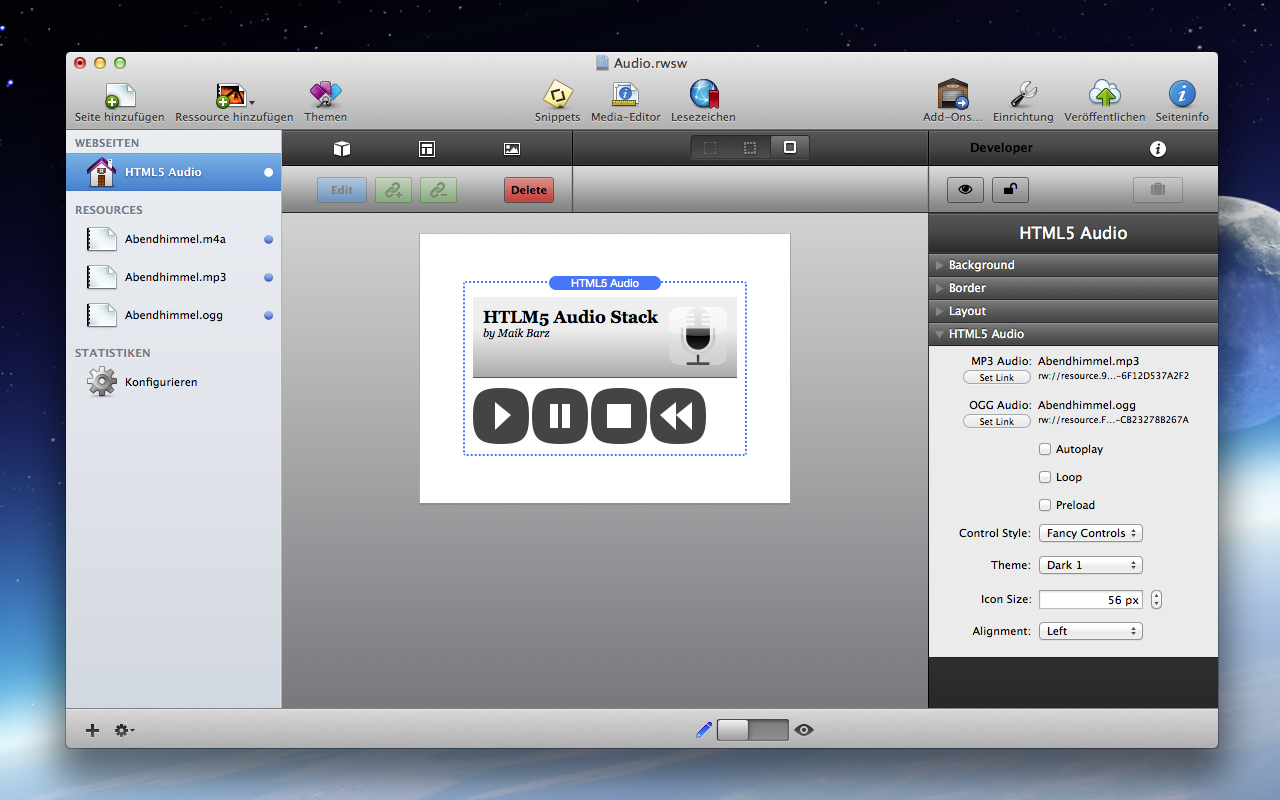

- Html5 audio player controls how to#
- Html5 audio player controls mp4#
- Html5 audio player controls free#
Var channel_max = 10 // number of channels When new objects are created (which is correct, but inconvenient), I've decided to keep track of the expected end times for each sound channel instead. There is an "ended" property for the audio object, but since that property is "false" The script checks each channel if it is done playing the previous sound. Sound is played for the first time through one of the generated audio channels. In the example above we use 10 channels (generated audio objects) and whenever the user clicks another sound to play, the script finds an inactive (and therefore unblocked) channel and then loads and plays the selected sound.Įach of the sounds is being preloaded with an audio html tag that is actually never used to play the sound - the preload="auto" property suggests to the browser to load all of the sounds when the page loads (this depends on available space and general user preferences in the browser), instead of when the Here is one solution to overcome the single-channel limitation of the audio tag: Use multiple rotating audio channels and assign new sounds to currently unused channels. Uncompressed nature of WAV is not a major problem. Wonderful.įor the examples on this page we are therefore using WAV audio clips, since all current browser implementations support that format. So both sides think the other is dealing with a patent troll.
Html5 audio player controls free#
Not implement Vorbis and Theora (Mozilla's choice), since they can't get convinced that these encoders are really as free as they say. Not free and the patent owners haven't convinced anybody that they won't at some point charge the hell out of MP4, while Apple and Google have licensed MP4, but will
Html5 audio player controls mp4#
October 31, 2010: Matched the latest version of the HTML5 spec (preload instead of autobuffer)īoth the audio and video tags have revealed a rather unholy mess in regards to software patents - which leads to the ridiculous situation that Mozilla will not implement MP4 since it's Position Absolute: Introduction to HTML5 audio tag and JavaScript.On this page we'll explore integration of these new HTML5 audio features with JavaScript to create complex soundscapes. In this tutorial, we briefly review its main attributes and continue with more advanced usage using JavaScript to do more with HTML5 audio tags.HTML5 features an elegant new audio tag implementation and the specification includes simple HTML audio controls that allow audio playing in pages You can check the W3School site to explore basic audio tag elements such as media source, media format, browser support, etc.
Html5 audio player controls how to#
How to add audio to webpage in JavaScript?īelow is a simple syntax for adding audio in a webpage. – huntaub Nov 27 ’10 at 19:30 Try this solution, it takes an array of soundtracks and plays all of them, playlist-style, and even loops the playlist. The HTML5 specs don’t support m3u playlist files, however there is a jquery plugin /plugin-tags/m3u that adds in the support.

In this short tutorial, we will show you how to use the HTML5 element and expand it to a basic music playlist by means of basic JavaScript. In short, considering shortcoming of third-party JS libraries and easy of using HTML5, it is strongly recommended to use HTML5 audio tags wherever needed. Do you need JavaScript to create music playlist in HTML? Here is the output: We can use text content between the and tags for browsers that do not support the element. The above element adds audio controls like play, pause and volume automatically on the web page.


 0 kommentar(er)
0 kommentar(er)
